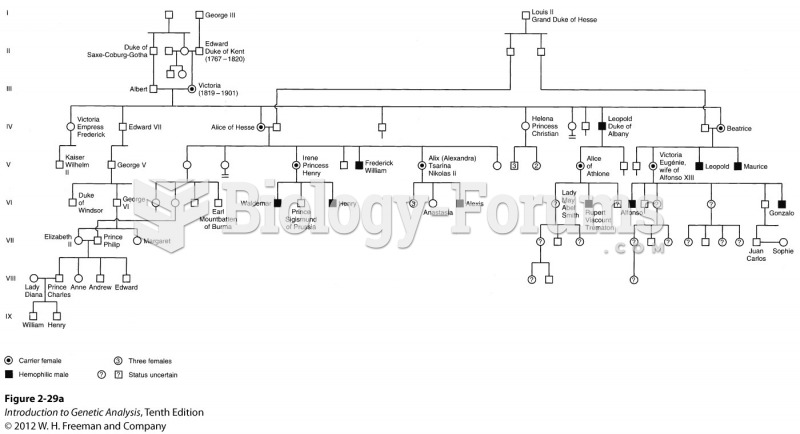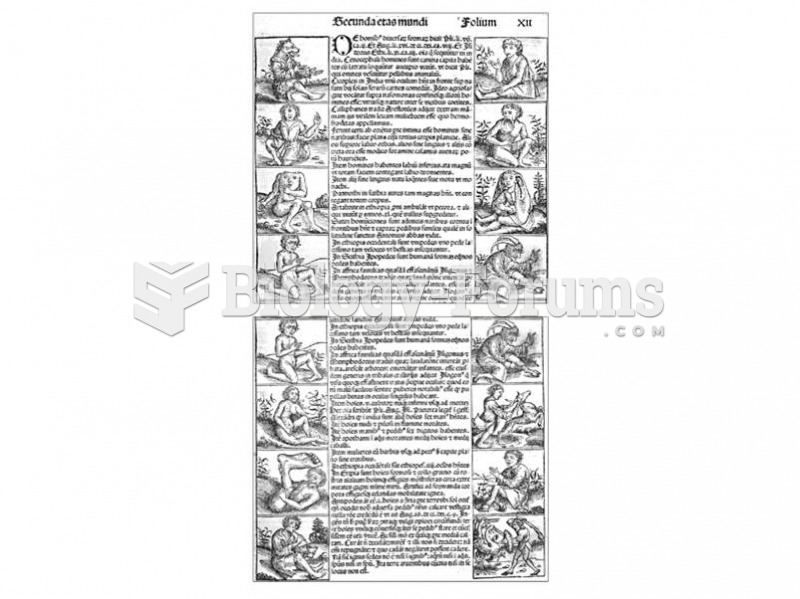|
|
|
Stevens-Johnson syndrome and Toxic Epidermal Necrolysis syndrome are life-threatening reactions that can result in death. Complications include permanent blindness, dry-eye syndrome, lung damage, photophobia, asthma, chronic obstructive pulmonary disease, permanent loss of nail beds, scarring of mucous membranes, arthritis, and chronic fatigue syndrome. Many patients' pores scar shut, causing them to retain heat.
Cucumber slices relieve headaches by tightening blood vessels, reducing blood flow to the area, and relieving pressure.
The heart is located in the center of the chest, with part of it tipped slightly so that it taps against the left side of the chest.
There are 20 feet of blood vessels in each square inch of human skin.
After a vasectomy, it takes about 12 ejaculations to clear out sperm that were already beyond the blocked area.






